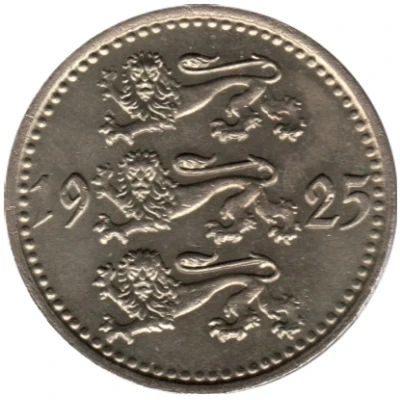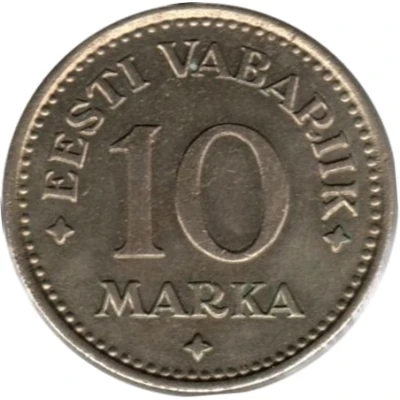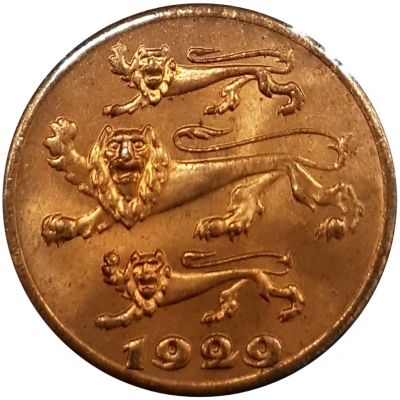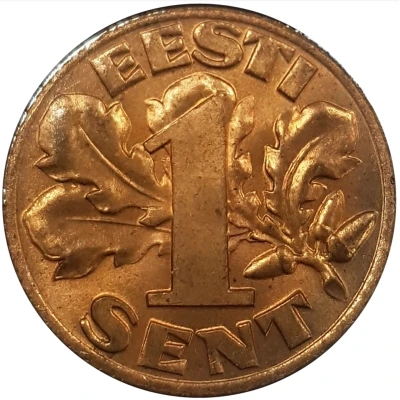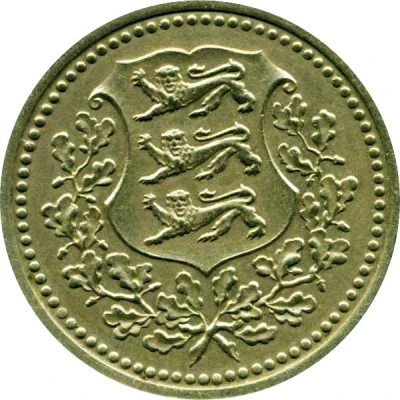
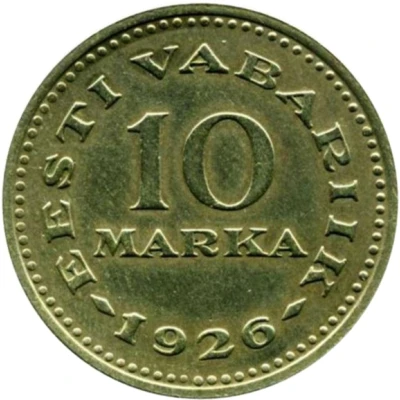

© wikipedia.org
10 Marka
1926 year| Nickel brass (70% Copper, 20% Zinc, 10% Nickel) | 6.25 g | 26 mm |
| Issuer | Estonia |
|---|---|
| Period | Republic (1918-1940) |
| Type | Non-circulating coin |
| Year | 1926 |
| Value | 10 Marka |
| Currency | Mark (1918-1927) |
| Composition | Nickel brass (70% Copper, 20% Zinc, 10% Nickel) |
| Weight | 6.25 g |
| Diameter | 26 mm |
| Shape | Round |
| Technique | Milled |
| Orientation | Medal alignment ↑↑ |
| Demonetized | 1926 |
| Updated | 2024-10-04 |
| Numista | N#17472 |
|---|---|
| Rarity index | 86% |
Reverse
Denomination above date.
Script: Latin
Lettering:
EESTI VABARIIK
10
MARKA
1926
Translation: Republic of Estonia
Engraver: Georg Vestenberg
Edge
Milled
Comment
Out of the 860,260 coins minted in total, 860,000 were melted down, and only 10 pieces survived. The other 250 belong to a set of specimens ordered by the Bank of Estonia in 1929.The mintage in the Standard Catalog of World Coins (Krause), 2,789,400, is incorrect.
Interesting fact
One interesting fact about the 10 Marka 1926 coin from Estonia is that it features a unique design that showcases the country's cultural heritage. The obverse side of the coin depicts the Estonian national coat of arms, which includes a shield with three lions passant gardant (walking lions) and a crown above it. The reverse side features an image of a traditional Estonian folk dress, which is a nod to the country's rich cultural history. The coin's design was created by the Estonian artist, August Weizenberg, and it is considered a rare and valuable collector's item among numismatists.
Price
| Date | Mintage | VG | F | VF | XF | AU | UNC |
|---|---|---|---|---|---|---|---|
| 1926 | 860260 | - | - | - | - | - | - |
Values in the table are based on evaluations by sales realized on Internet platforms. They serve as an indication only for 10 Marka 1926 coin.
